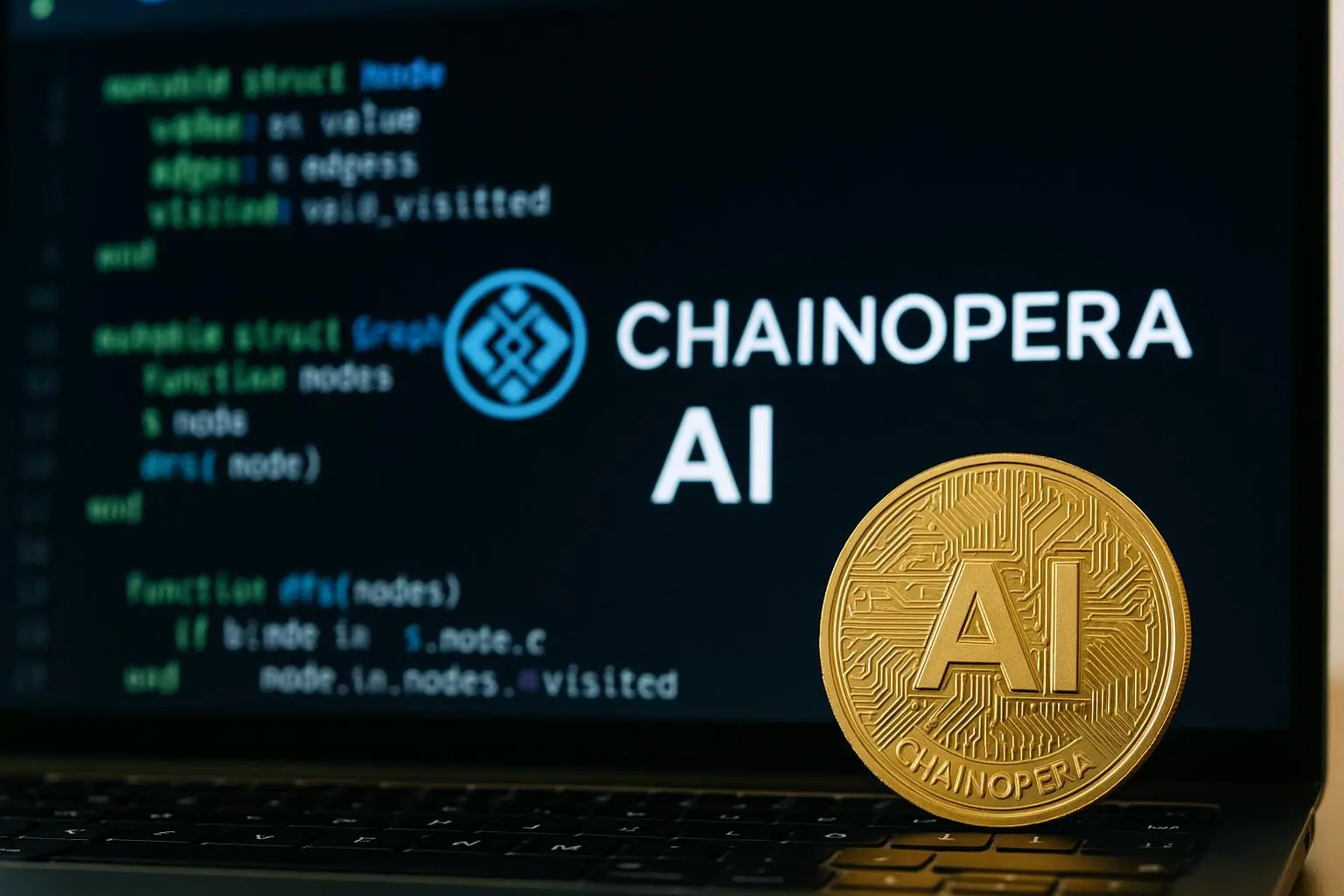The New Powerhouse at the Crossroads of AI and Blockchain
In one of the most talked-about developments in the emerging Web3 landscape, ChainOpera AI has exploded into the spotlight, merging blockchain and artificial intelligence into a single, rapidly scaling protocol. The project’s fully diluted valuation has already surpassed $4 billion, and its rise is forcing both crypto and tech investors to rethink how the next generation of decentralized applications will be built.
ChainOpera AI’s ascent underscores a defining shift in the market narrative: after years of separate evolution, AI and Web3 are converging — and projects that manage to bridge these technologies could become the next category leaders.
“We’re witnessing the start of a structural merge between AI infrastructure and decentralized networks,” said one venture analyst from Singapore tracking the sector. “ChainOpera AI is the first serious contender proving that Web3 doesn’t just host AI — it can power it.”
How ChainOpera AI Works
At its core, ChainOpera AI operates as a decentralized compute and model-sharing protocol, enabling developers to deploy, train, and monetize AI models across distributed networks. Instead of relying on centralized data centers like AWS or Google Cloud, ChainOpera leverages a global mesh of blockchain-connected nodes that contribute processing power in exchange for the platform’s native token.
The result: AI services that are cheaper, censorship-resistant, and community-owned.
Users can tap into the network to run generative models, machine-learning pipelines, or data analytics tasks, while developers earn rewards for contributing open-source model updates and computing resources.
The system also integrates zero-knowledge proofs to ensure privacy-preserving AI computation — meaning models can train on sensitive data without revealing it publicly.
This architecture has already drawn comparisons to decentralized cloud projects like Render and Akash, but with a critical AI twist.
From Niche Experiment to Market Leader
When ChainOpera first appeared earlier this year, few expected it to reach mainstream visibility so quickly. Its early focus was research-driven — an open-source experiment for AI interoperability.
But following a series of high-profile funding rounds and partnerships with AI research collectives, the project’s momentum exploded. In less than six months, total value locked (TVL) within its ecosystem grew by triple digits, and its token’s secondary-market performance mirrored that enthusiasm.
Venture firms with prior exposure to Layer-2 networks and compute infrastructure are now pivoting toward AI-embedded protocols like ChainOpera, betting that hybrid models will dominate the next bull cycle.
According to a recent report from The Block, ChainOpera’s valuation surge was fueled by “strategic cycle timing and unique market positioning as both an AI and Web3 infrastructure play.”
Why Investors Are Paying Attention
Institutional and retail interest in AI-related crypto assets has intensified since midyear. While speculative enthusiasm has driven many AI token rallies, analysts say ChainOpera’s case is different: its real utility, strong developer adoption, and early enterprise integrations are tangible.
The project’s whitepaper outlines plans to host modular AI applications — from data labeling markets to voice synthesis engines — all deployed on-chain. If executed, this could create a decentralized alternative to the cloud-based AI models currently dominated by OpenAI and Anthropic.
ChainOpera also aligns neatly with ongoing trends in the AI sector:
- Decentralization of model access to prevent monopolies.
- Data sovereignty for contributors sharing datasets.
- Token-based incentives for compute participation.
This synergy positions the protocol at the heart of a fast-growing narrative: the fusion of AI agents and blockchain governance.
Challenges Ahead
Despite its impressive growth, ChainOpera faces steep technical and regulatory challenges.
Scalability remains an open question. Running heavy AI computations on decentralized infrastructure can be resource-intensive, and ChainOpera’s success depends on whether its distributed compute layer can compete with centralized AI cloud performance.
Security and model integrity are also major hurdles. As one cybersecurity researcher noted, “Decentralizing AI means decentralizing the attack surface. That’s powerful, but risky.”
Regulatory clarity could also become a sticking point. AI models trained on user-contributed data may raise privacy and IP concerns under emerging data protection laws in the EU and the U.S.
Still, many experts view these as growing pains rather than fatal flaws. The same issues faced by early DeFi protocols are now being addressed by maturing on-chain systems — and ChainOpera’s pace of iteration suggests it’s prepared for scrutiny.
A Glimpse Into the Web3-AI Future
The surge of ChainOpera AI marks more than a new project launch — it represents the beginning of a new class of decentralized intelligence networks.
Other protocols are already following suit, with projects like Fetch.AI, SingularityNET, and Gensyn exploring similar intersections between data markets and autonomous agents. The difference, however, is momentum: ChainOpera has captured both the capital and the cultural moment.
If the integration of AI computation and blockchain governance continues, the result could be a decentralized intelligence economy — one that moves beyond tokens and into infrastructure for real-world AI deployment.
For now, ChainOpera AI stands as the clearest signal yet that the Web3 narrative is evolving. It’s not just finance or NFTs anymore — it’s about building a decentralized brain for the internet itself.


Comments